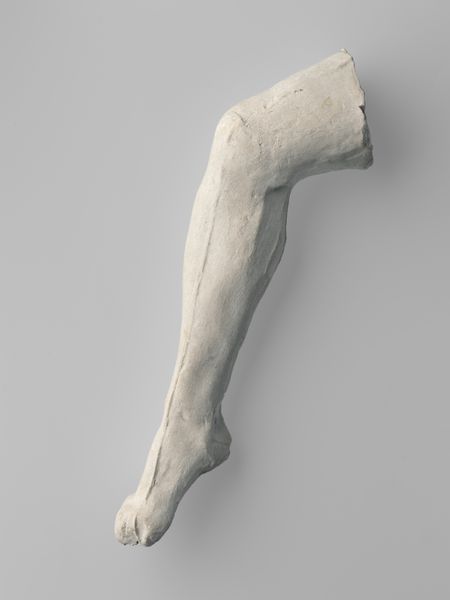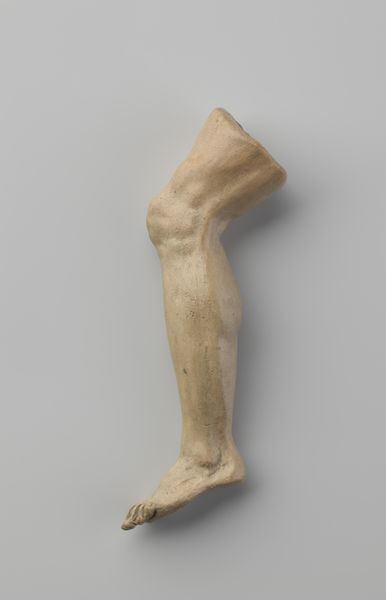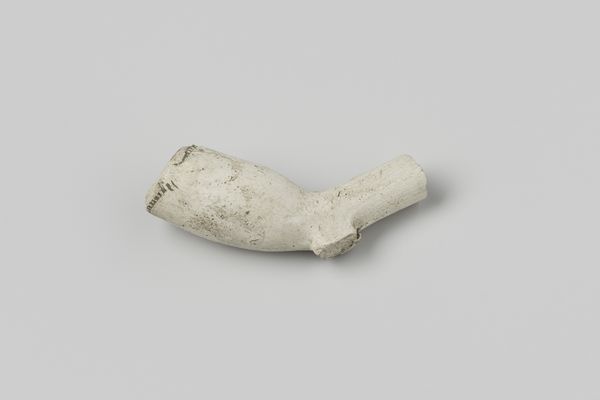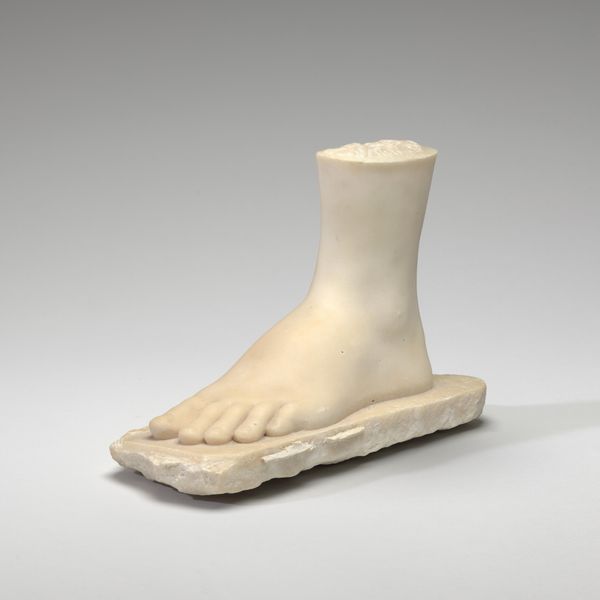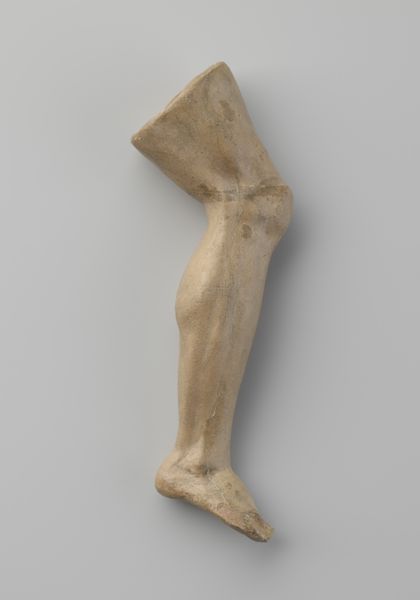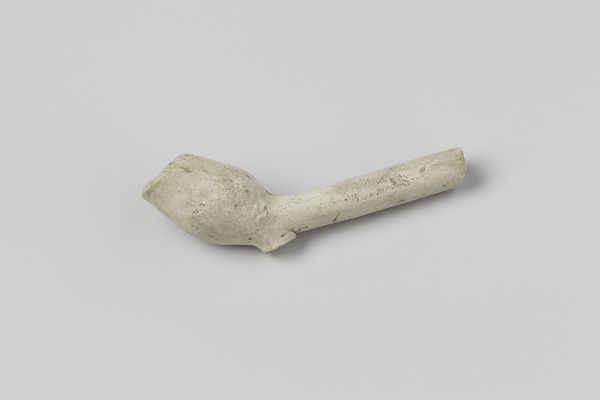
sculpture
#
portrait
#
sculpture
#
academic-art
#
modernism
Dimensions: Length: 4 1/2 in. (11.4 cm)
Copyright: Public Domain
Auguste Rodin made this plaster study of a leg in France, though the exact date is unknown. Rodin challenged the academic traditions of his time, and his fragmented sculptures were considered highly unconventional. In 19th-century France, the art world was governed by strict institutions, like the École des Beaux-Arts, that promoted classical ideals of beauty and completeness. Rodin, however, was more interested in capturing the dynamism of the human form and the emotional states it could express. This study, with its truncated form and rough texture, departs from the polished, idealized nudes that were popular at the time. It suggests a new way of seeing the body, not as a perfect whole, but as a collection of expressive fragments. To fully appreciate Rodin's break with tradition, one must consider the institutional structures that shaped the art world of his time. A close look at exhibition reviews and academic writings can provide us with a deeper understanding of how Rodin's work challenged the norms of his day.
Comments
No comments
Be the first to comment and join the conversation on the ultimate creative platform.
